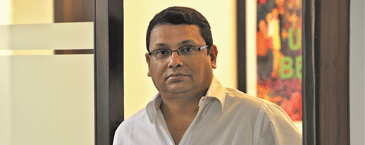Uday Shankar's interview with Campaign India
It’s ten years since STAR Plus went Hindi, and, with the celebrations, a new identity and positioning has been revealed. Campaign India’s Anant Rangaswami met Star India CEO Uday Shankar to understand the need for change and the implications What is the need you felt for the change? More than one reason. First and foremost, STAR Plus, which went on to become an all-Hindi channel which is really successful, hasn’t had the time or even the need to look back and re-examine itself.
by Campaign India Team

To continue enjoying this content, please sign in below. You can register for free for limited further access or subscribe now for full access to all out content.
Sign In
Register for free
✓ Access limited free articles each month
✓ Email bulletins – top industry news and insights delivered straight to your inbox
Subscribe
✓ All the latest local and global industry news
✓ The most inspirational and innovative campaigns
✓ Interviews and opinion from leading industry figures
